There are many types of maple trees, and their lifespan varies depending on the type. In general, most types are thought to live anywhere between 100 and 200 years, though there are some (like the bristlecone pine) that can survive for thousands of years.
Maple Tree Life Expectancy
Trees are sensitive to changes in the atmosphere, and their survival depends on several factors.
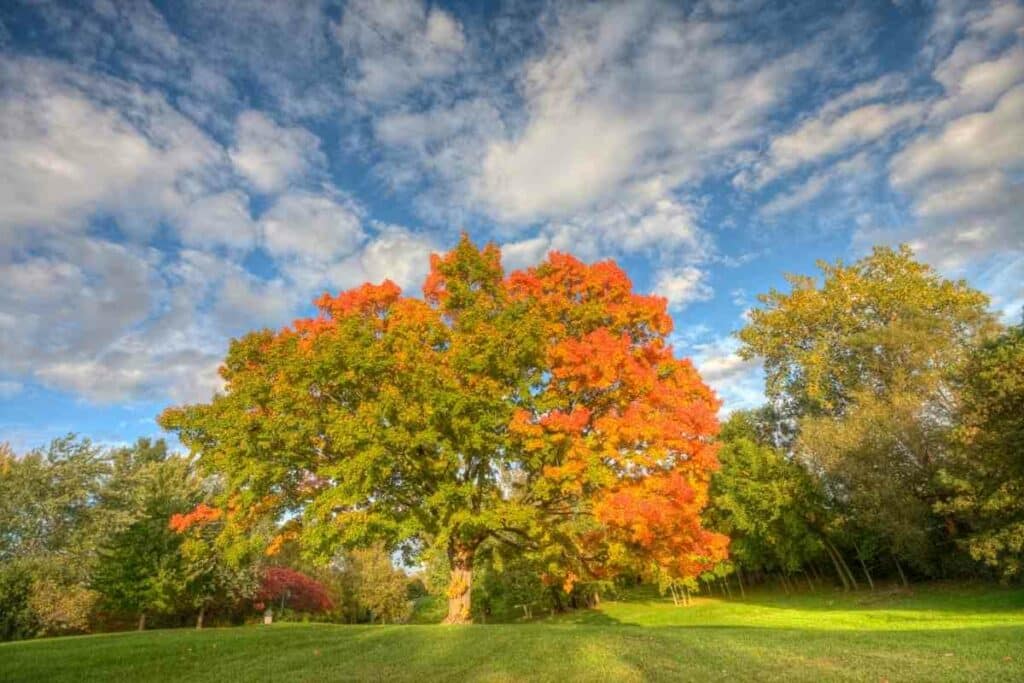
When they are able to live and thrive, some can go on for hundreds or even thousands of years.
Below, we’ll take a look at some of the most well-known types of maple trees and how long you can expect them to live.
Red Maple
Among all the types of maple trees, the red maple is one of the most common, residing in many parts of the world.
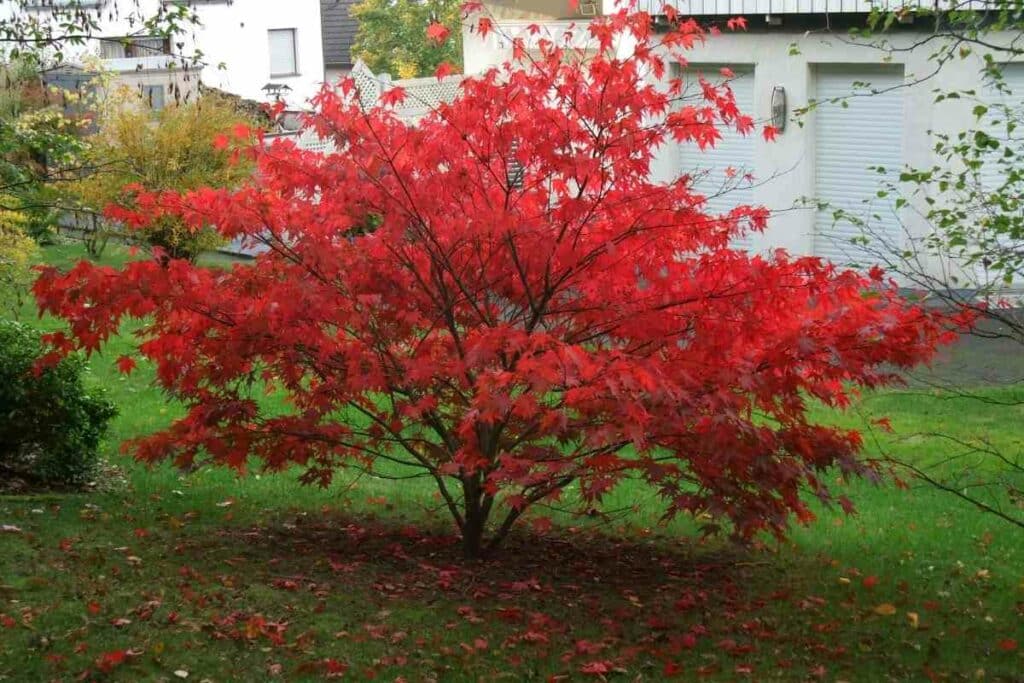
These beautiful trees with colorful foliage are very sensitive to changes in their environment and are often targets of deforestation or uprooting due to bad weather conditions.
It’s because of these things that red maples trees have a low average of fewer than 100 years, though, when in good conditions, these trees can live more than 300 years.
Silver Maple
Like red maple trees, silver maple trees are also sensitive to their environment.
When in the wild, their microbiomes are rich and full of beneficial insects, bacteria, fungus, and more.
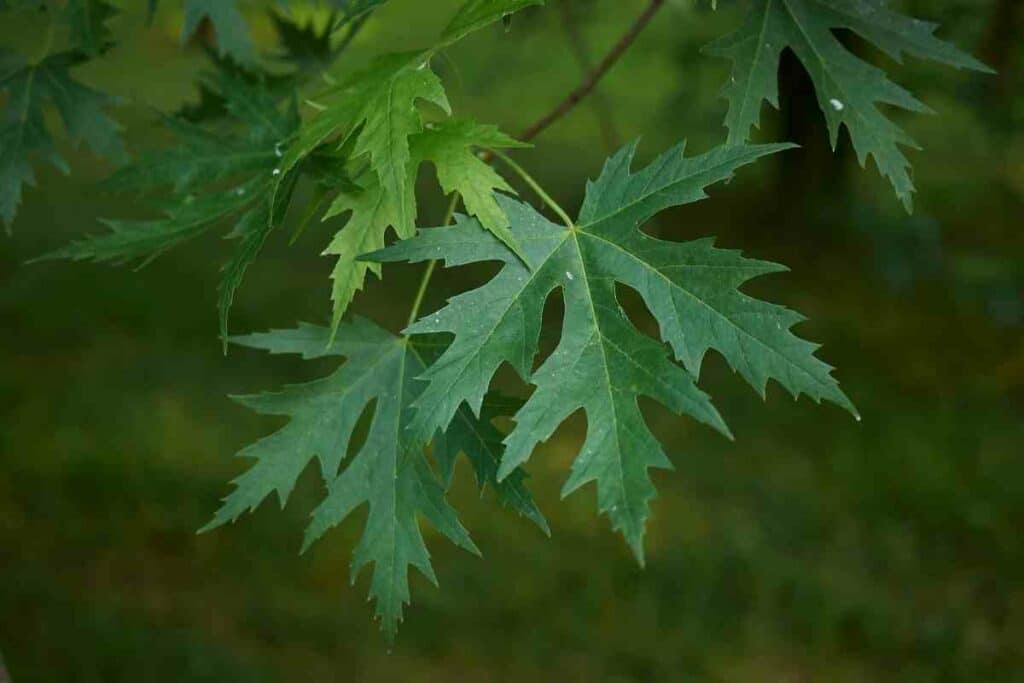
However, once domesticated and planted in urban areas, these trees suffer.
In the Wild: They average 125 years or more. In urban settings, many of these beautiful trees only make it to 65 years.
Sugar Maple
Sugar maples are one of the longest-living maple trees, able to withstand the cold and less sensitive to changes in their environment.
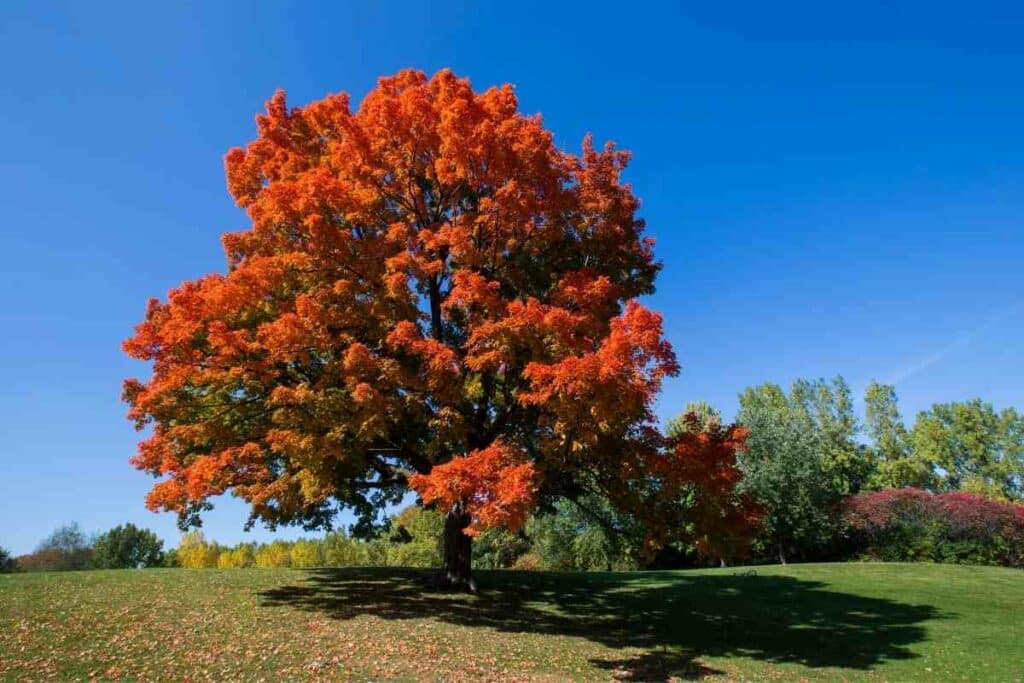
The one thing that gets in the way of sugar maples living a long and healthy life is predation, as their trunks contain sweet sap that attracts insects.
Where Do Maple Trees Live?
Maple trees do best in climates that are cool and moderate.
They typically spread across much of the United States, some of Europe, Asia, and even Northern Africa.
Maple trees are not only sought-after because of their beautiful colors but are also a source of syrup and wood.
The maple tree family has more than 120 species within it, each one with its own preferences as far as weather, soil, and resistance to plant diseases.
Can I Save My Dying Maple?
If you have a maple planted and notice that it’s not thriving, you may be able to take steps to save it if you act fast.
In the majority of cases involving maple trees, issues start due to unhealthy roots.
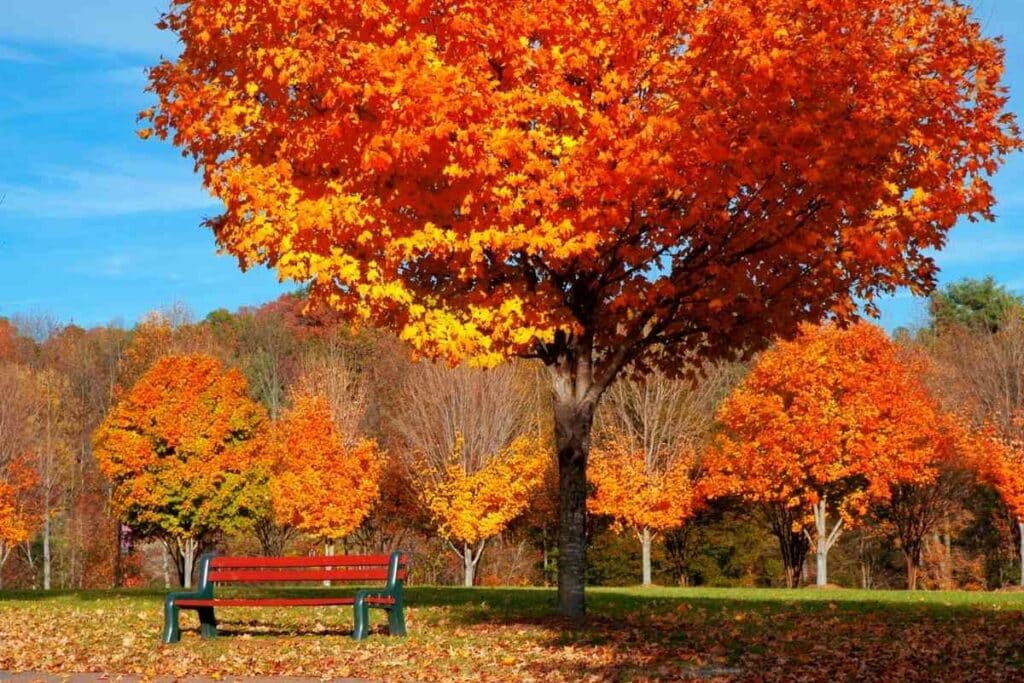
As a precaution, you should always keep your eyes open and look for signs of fungal or bacterial growth.
If you suspect that your maple tree is not doing so hot, there are a few signs that you should keep on the lookout for, including:
- Cracks or holes in the bark
- Signs of decay (both inside and out)
- Branch health (dead branches or dying leaves)
- Discoloration of leaves before autumn
If you see any of the signs mentioned above, you should seek assistance from a professional.
Steps to Save your Dying Maple Tree
The moment that you realize any of the signs and symptoms, there are some things that you should do to prevent further damage and give your tree a chance to survive.
Step #1 – Identify the Problem
The first step is the most trivial, though you’ll need to identify the problem to be able to fix it.
Some key issues with maple trees include are:
- lack of water
- overwatering
- excess fertilizer
- and plant disease
Some of these are easier to fix than others, so be sure to look for signs and diagnose accordingly.
Step #2 – Change the Way you Water
Some maple tree owners that don’t have much experience tend to overwater their trees.
Maple trees are the most susceptible to overwatering when they are young, so it’s important to be careful when first starting out.
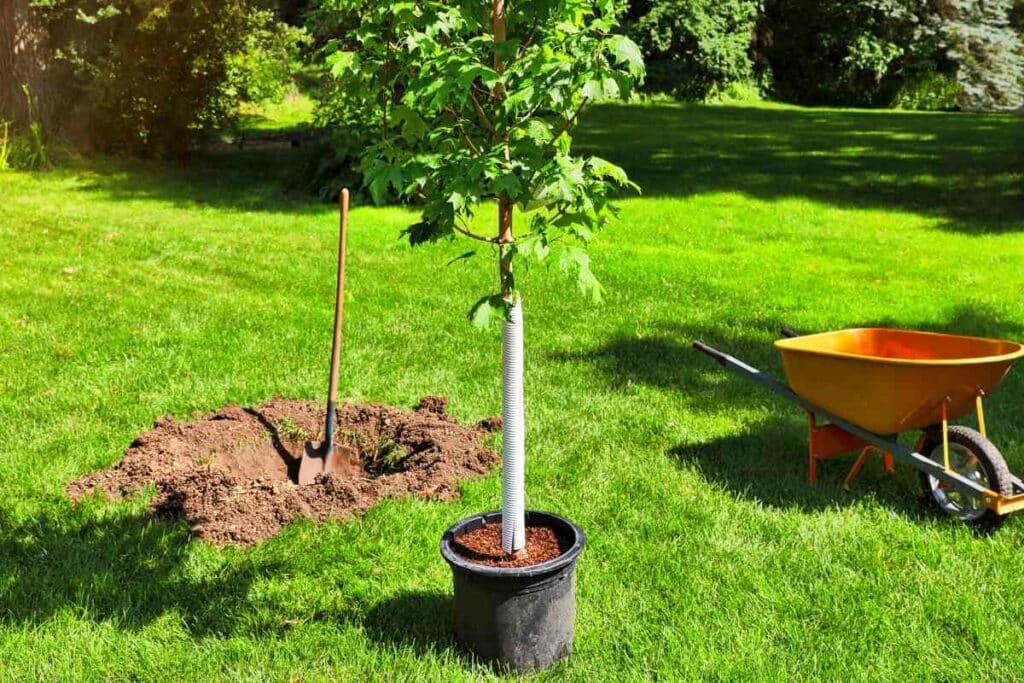
Make sure that you take your soil, the climate in your area, and the size of your tree into account before deciding how much to water.
Then, stick to a schedule and make sure that your tree is getting enough water to grow healthy, strong, and live a long life.
Step #3 – Keep Tabs on Fertilizer
You can’t just use any fertilizer with any tree or plant.
Instead, you need different ones that are specific to the needs of your maple tree.
If you’re not sure and star to see signs of an unhealthy tree, you may need to get an agriculturist involved.
The fertilizer you’re using could be depleting your tree of key nutrients or adding too much.
Either way, you’ll start to see signs like:
- dying leaves
- hanging branches
- and maybe even some strange growth around your tree
Step #4 – Start Snipping
There is nothing wrong with snipping some of the hanging or dead branches around your maple tree.
It’s really healthy for your tree, giving them a chance to grow stronger and healthier.
You want to be sure to only prune unhealthy branches and leave those that are thriving alone.
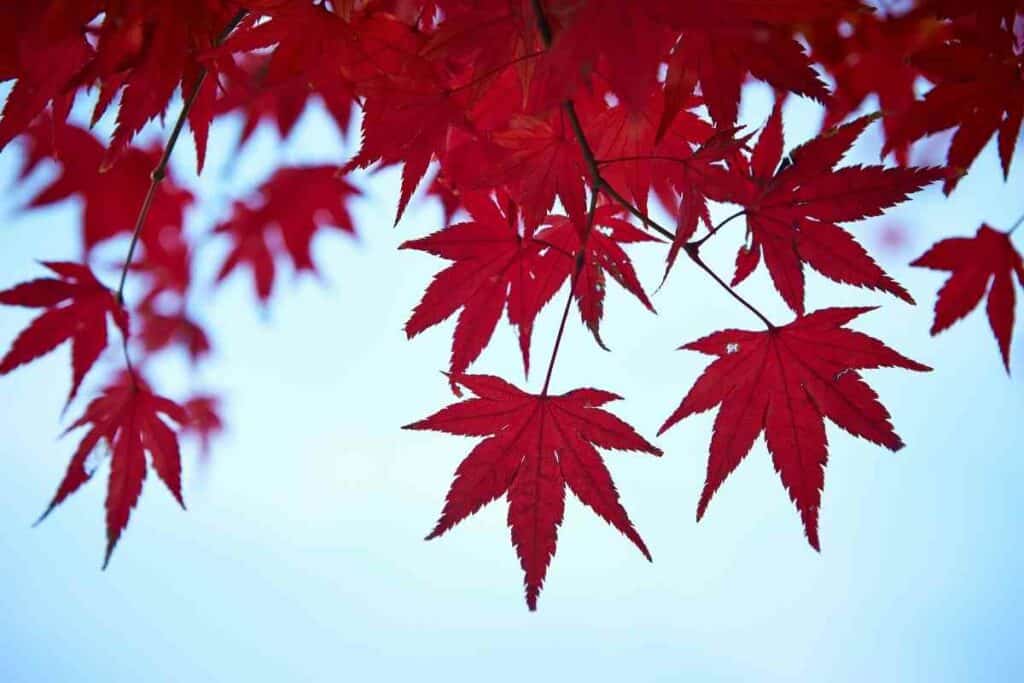
While you’re at it, you should also check around your maple tree, making sure that there is no other growth in the ground.
Even the smallest root-growing weeds can take away from your tree, so make sure to cut them out before they can.
Step #5 – Mulching (Don’t Overdo It)
Adding mulch to the base of your tree is a sure way to give your tree moisture and nutrients.
While a bit of mulch is recommended, you should do what you can to ensure that you’re not overdoing it.
Get on a regular schedule of mixing some mulch and adding it to the soil at the base of the tree and further out.
Step #6 – Control Pests and Diseases
There are a lot of insects, that love maple trees.
On top of that, there are bacteria, fungi, and viruses, all of which are naturally occurring in soils.
With all of these conditions around, you need to take steps to control pests and reduce the possibility of disease.
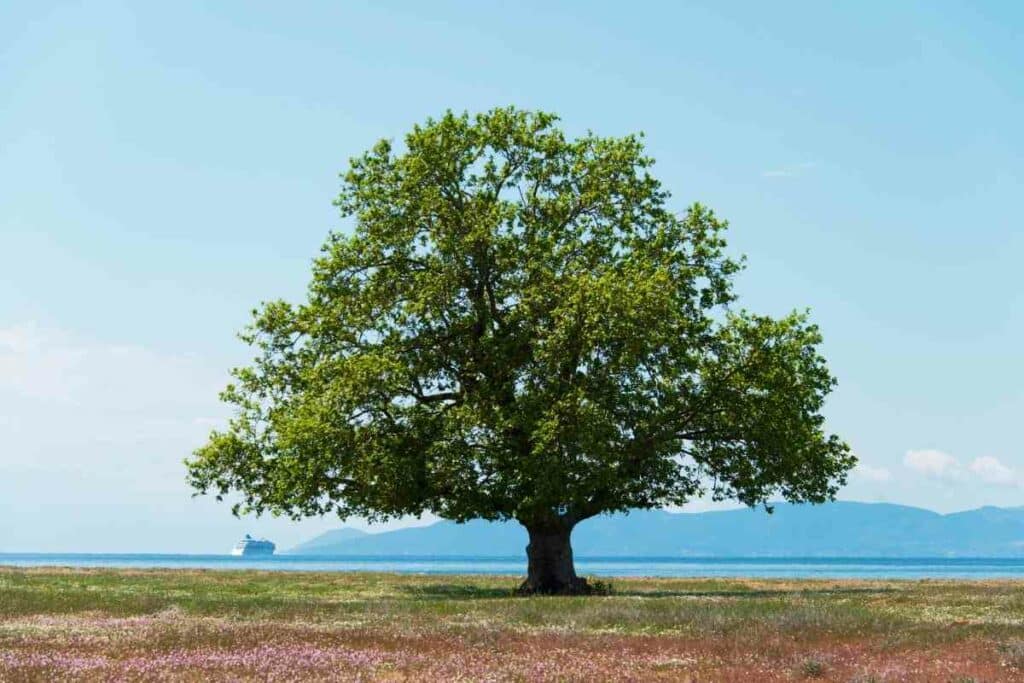
While it’s simple to reach for a pesticide that claims to do it all, you need to be careful, as you don’t want to deplete your tree’s good microbes.
Try something, observe your tree, and don’t add too much pesticide too often, reducing the chances of your tree suffering from the chemical cocktail.
Final Thoughts
Maple trees are gorgeous, growing in a number of conditions and climates.
Depending on the type that you’re interested in, you could expect hundreds to thousands of years from your maple tree.
Just like with any tree, you’ll need to keep a close watch for signs that it’s not healthy.
Spotting issues with your tree early is its best defense against a wide range of issues, helping you keep it alive and thriving for its entire life expectancy.
Red, yellow, orange, and gold leaves and a large and abundant burst of branches and leaves are a great addition to any home, though it’s important to keep them in tip-top shape.
